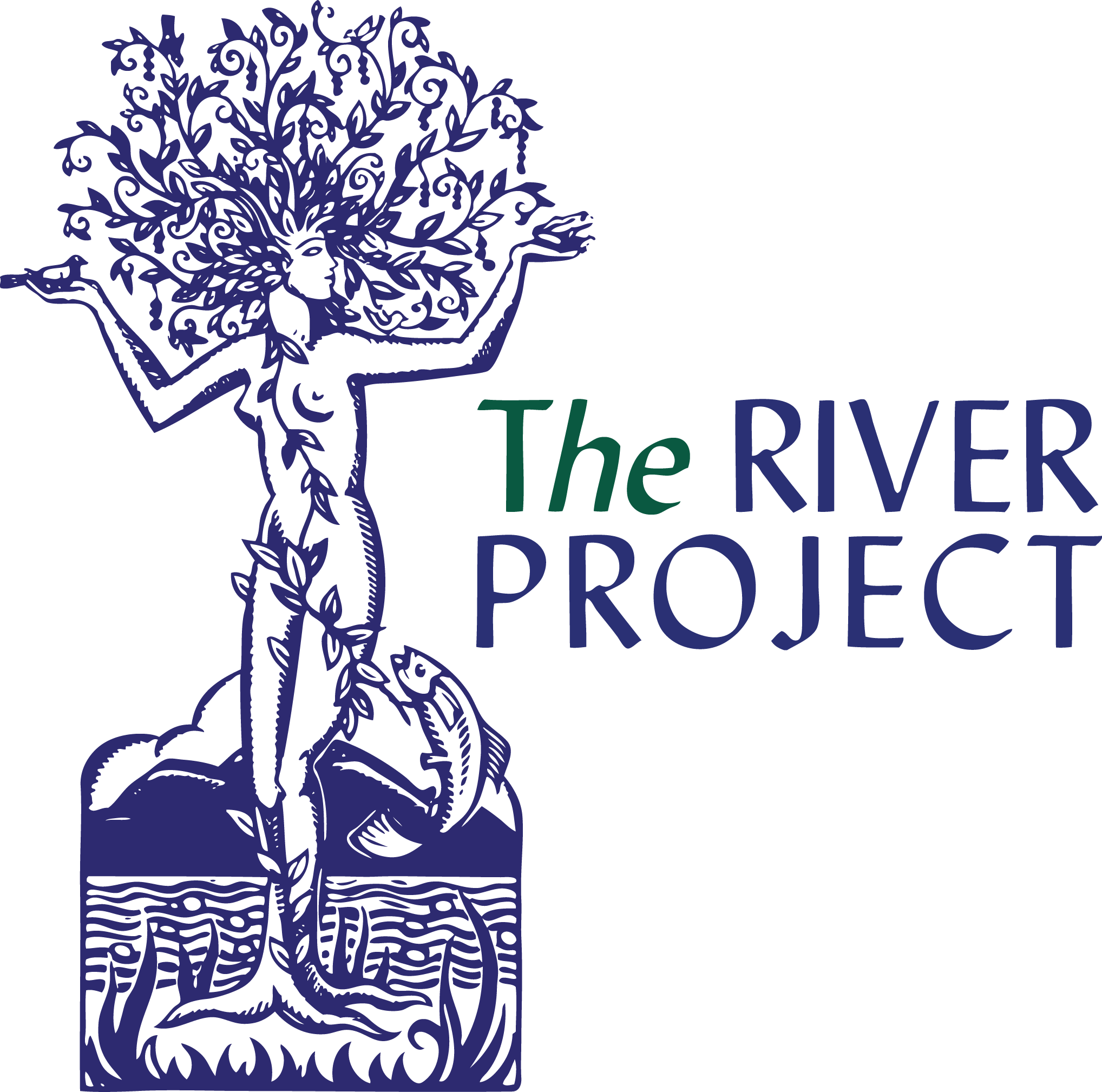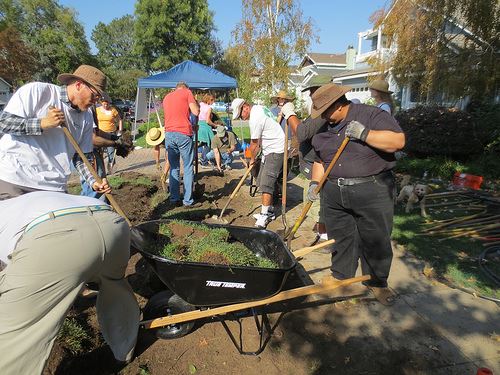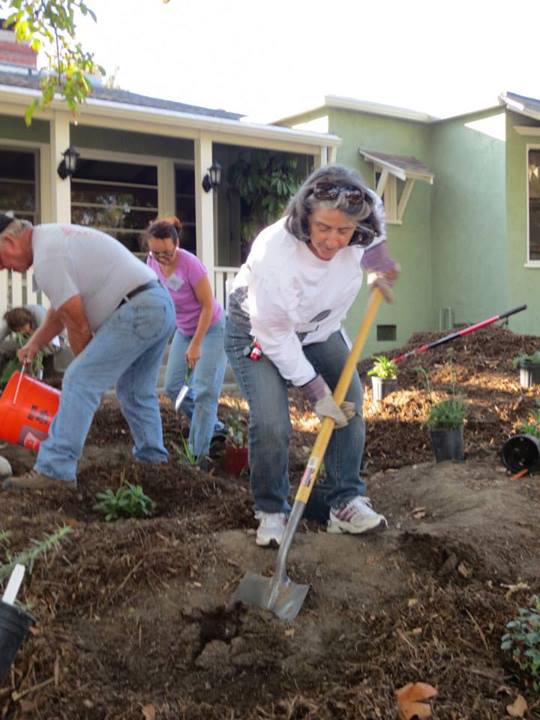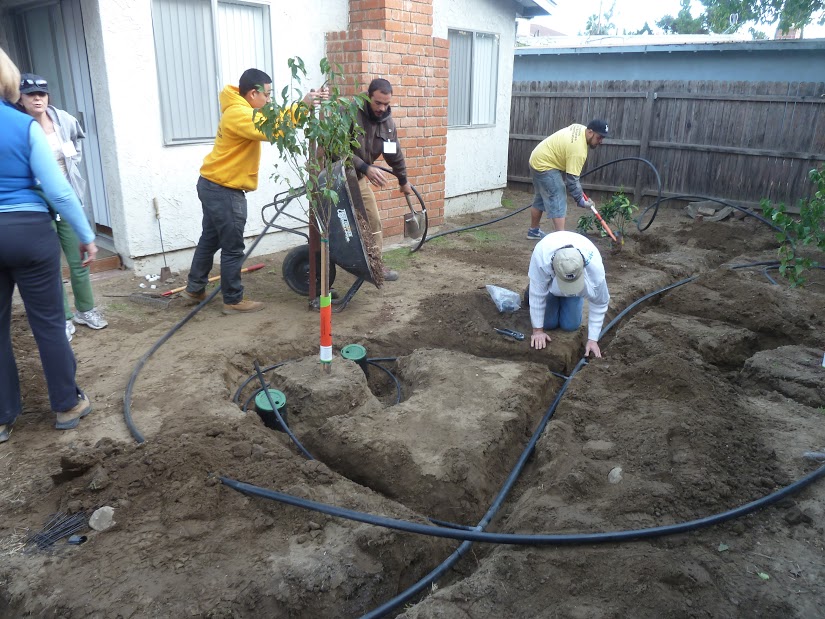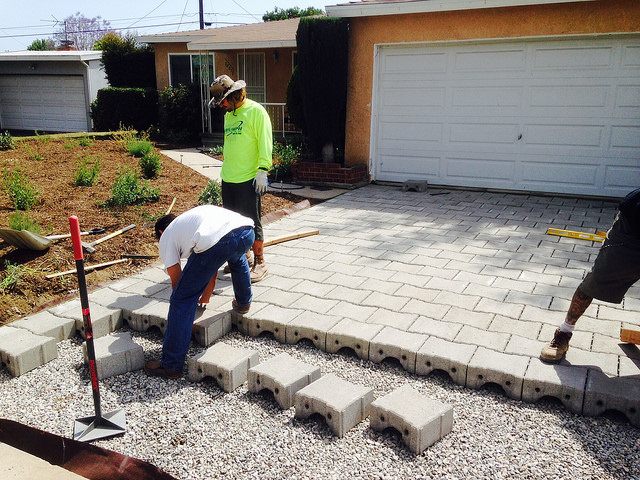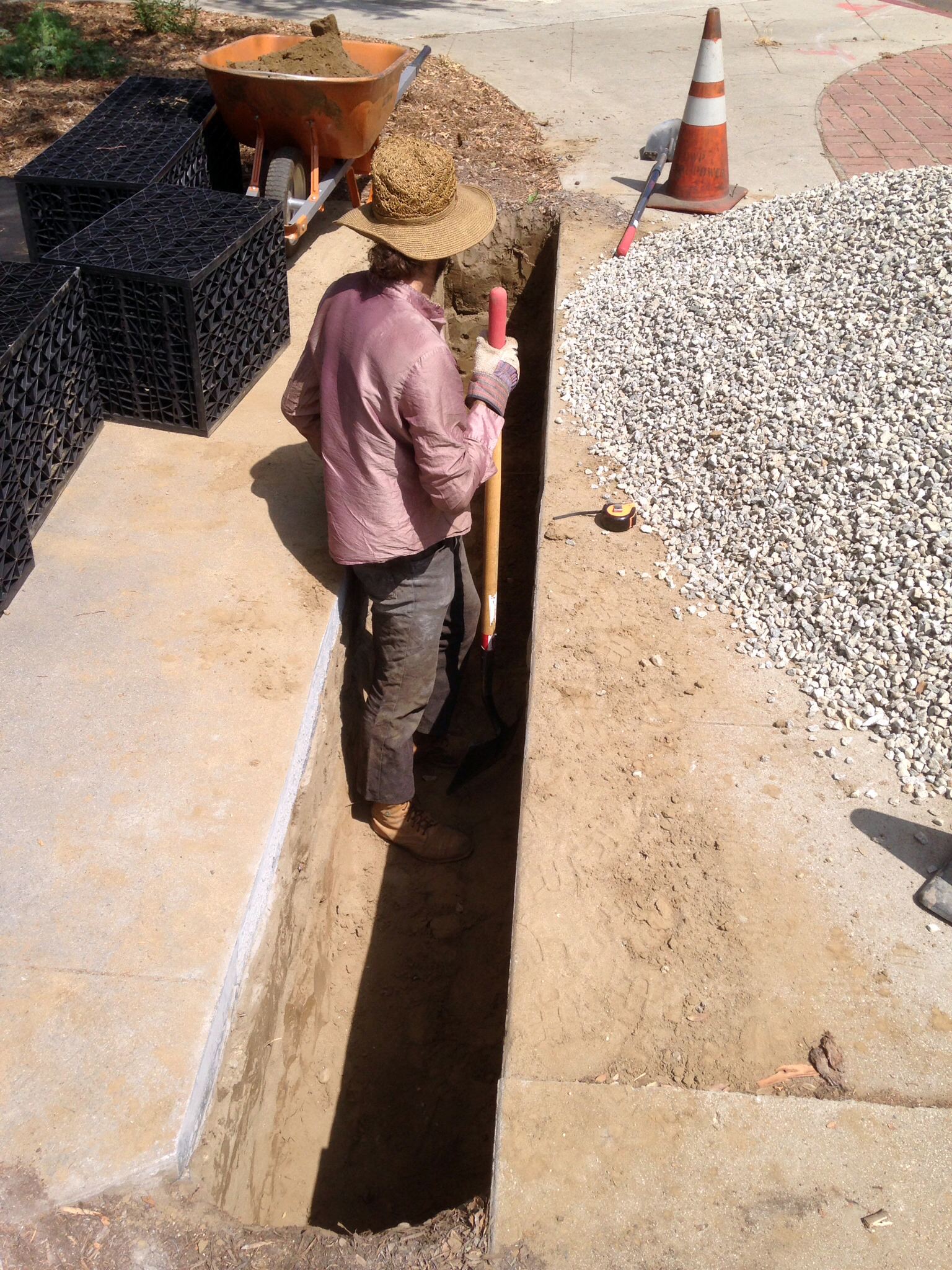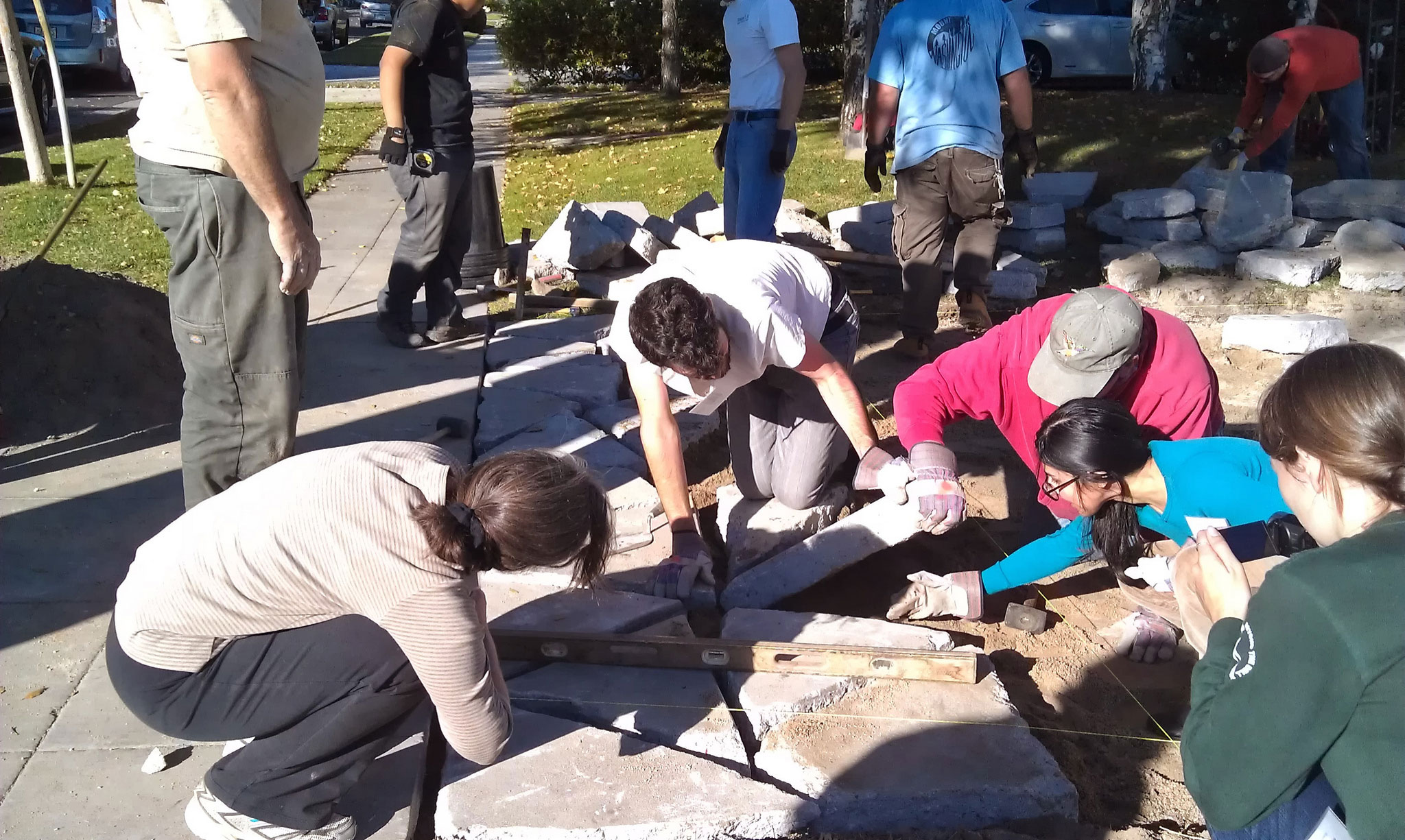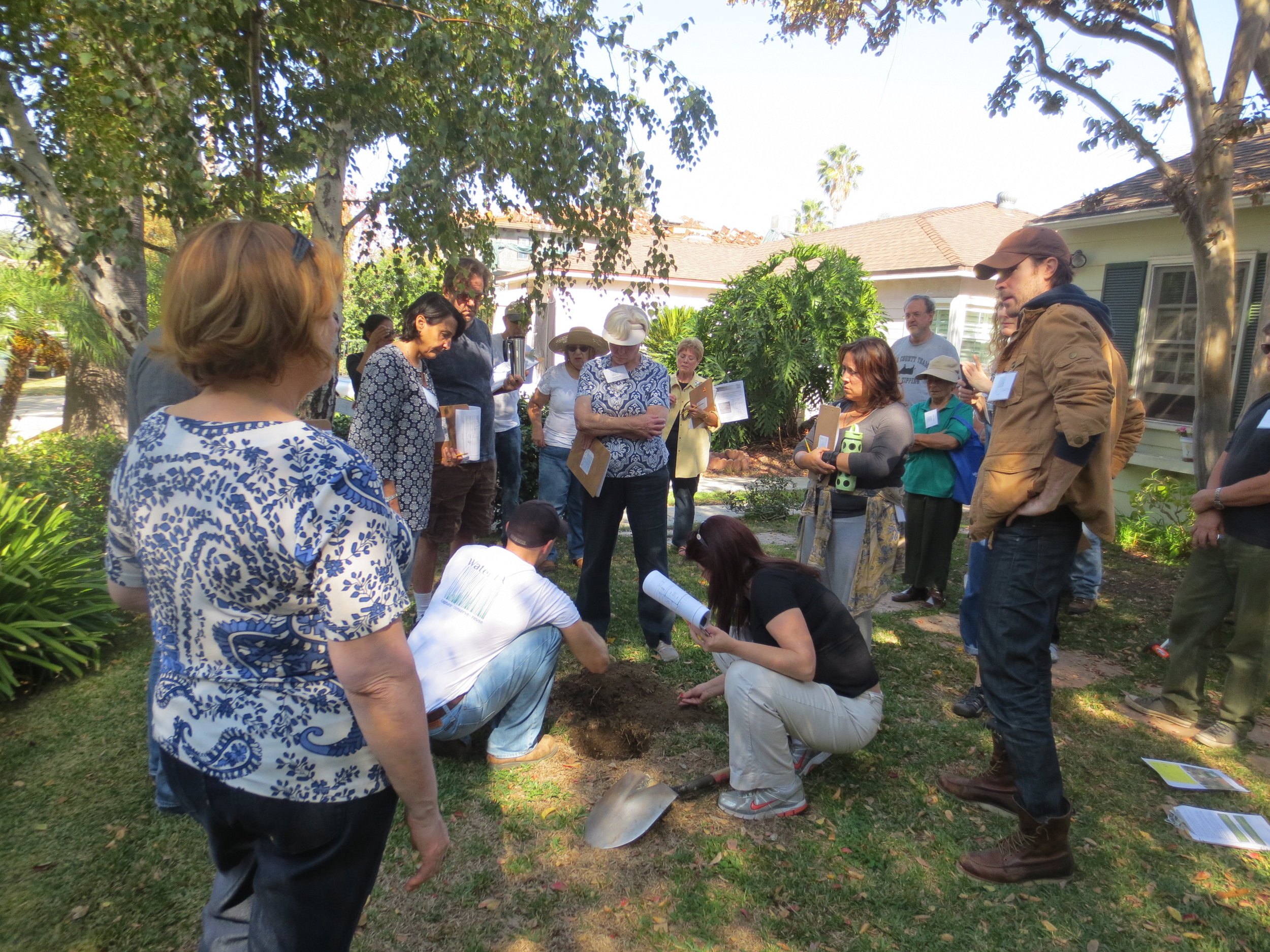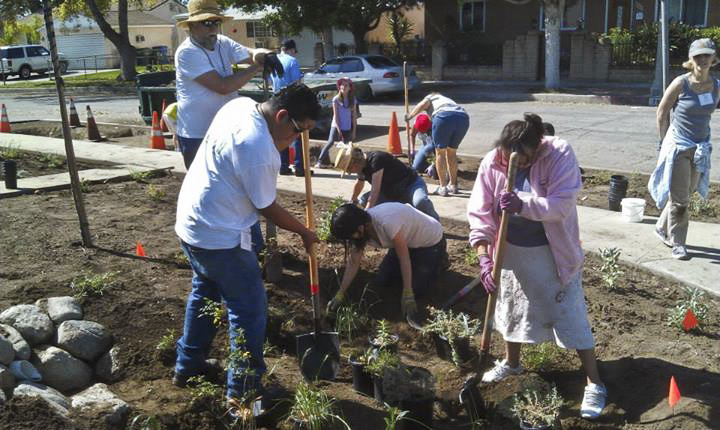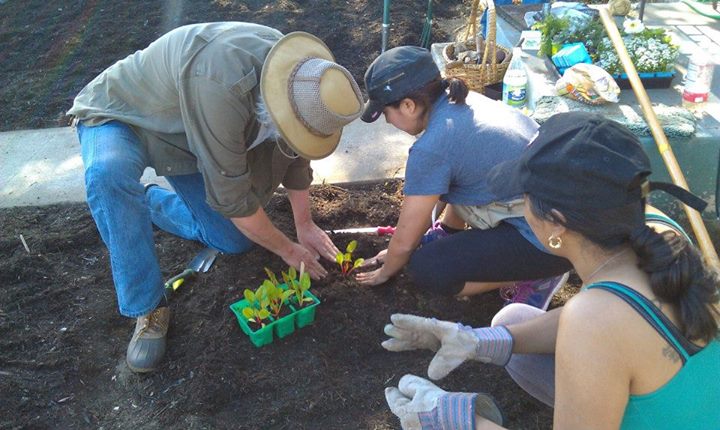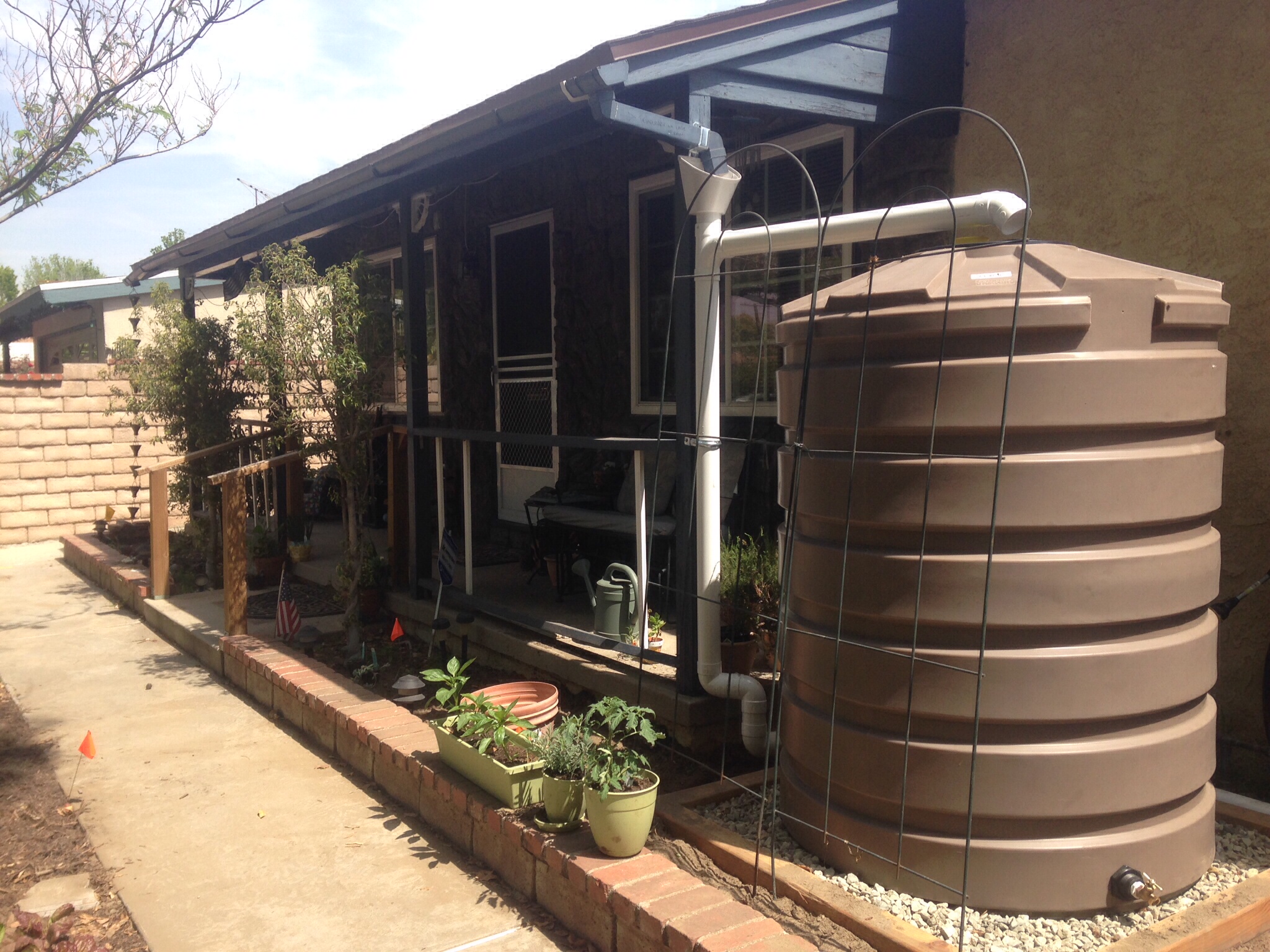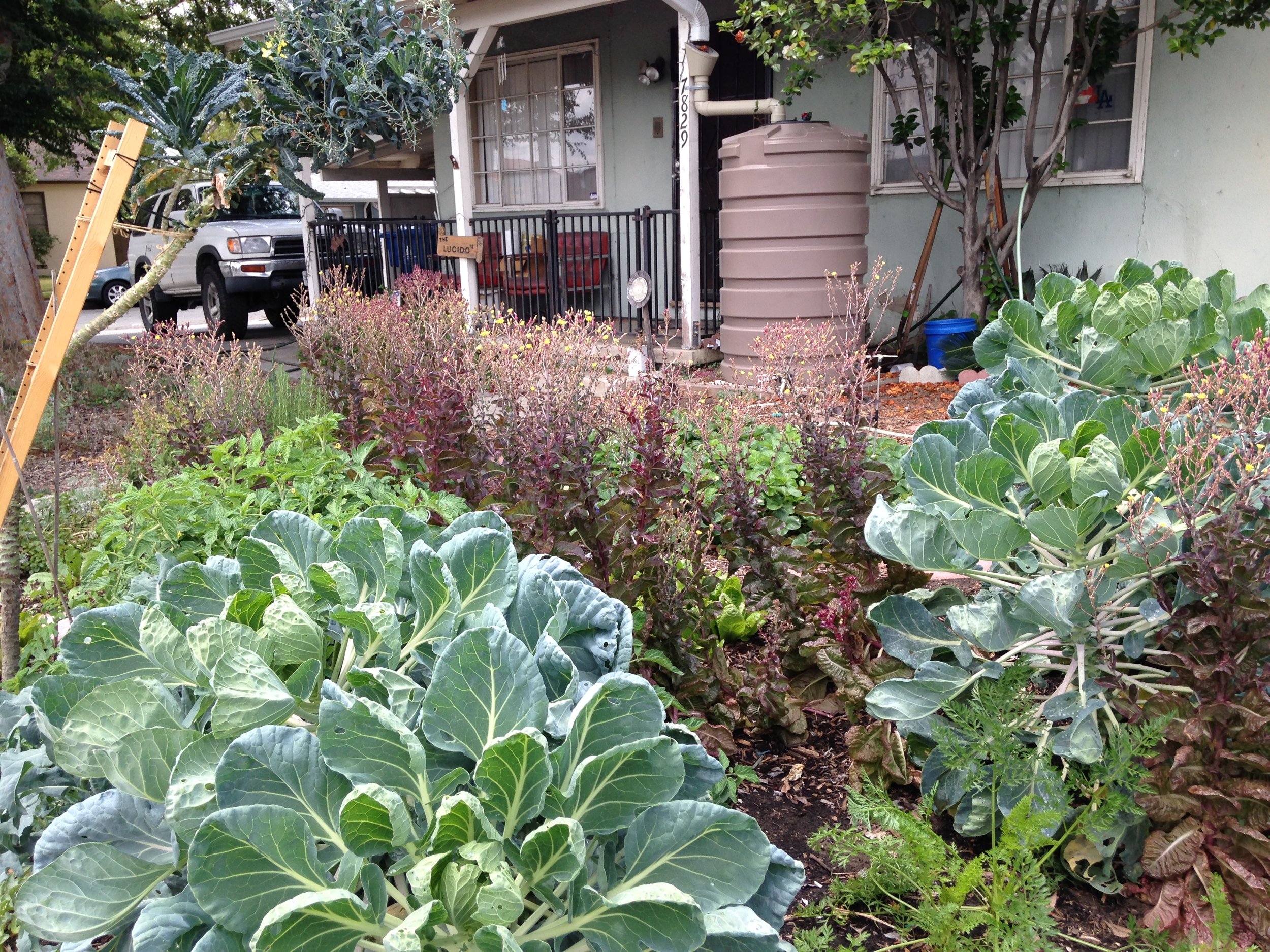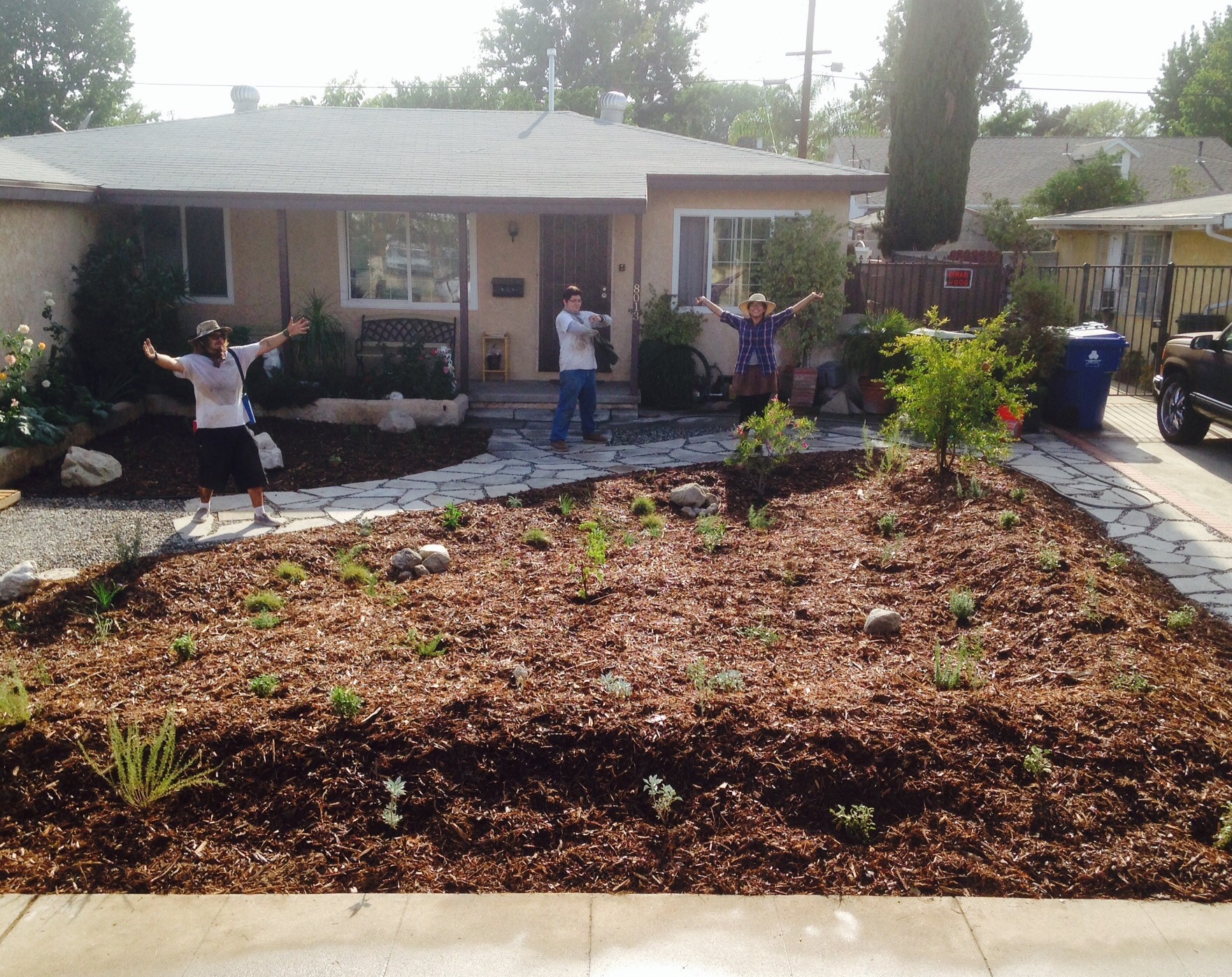Water LA Pilot: Panorama City
Through a case study of a parcel-scale water management project in the neighborhood of Panorama City, within the City of Los Angeles, we explored the social, environmental, and economic impacts of retrofitting residential property into spaces of water capture, conservation, and reuse. These parcel-scale interventions helped heal the urban environment and improve quality of life.
The Water LA program and collaborative was launched with funding from the Coastal Conservancy, LADWP and the Rose Foundation, in conjunction with local agencies and partners. 22 households in the San Fernando Valley neighborhood of Panorama City were retrofitted. Participants could draw on any combination of six small-scale, low-cost, low-tech strategies. Strategies included rain grading, rain tanks, parkway retrofits, permeable paving, infiltration trenches, and greywater systems.
The initial outcomes indicate that if parcel-based techniques were adopted across the region, Los Angeles could reduce the rate of potable water consumption, reduce flood risk, clean streams, and increase local water supply. Hydrologic modeling data indicates that the reworked properties absorb a substantial amount of rainwater into the ground, decreasing pollution in the region’s waterways and recharging the underground aquifers.
Learn more about our current round of Water LA here.
The homes retrofitted by Water LA:
Achieved 54 gallons per capita per day
Capture and treat an estimated 1.2 million gallons of water in a year with average rainfall
Provide 18,175 square feet of native plants and trees for habitat, shade, air quality enhancements, carbon sequestration, and aesthetic benefits
Cost an average $5,200 per household in labor and materials
